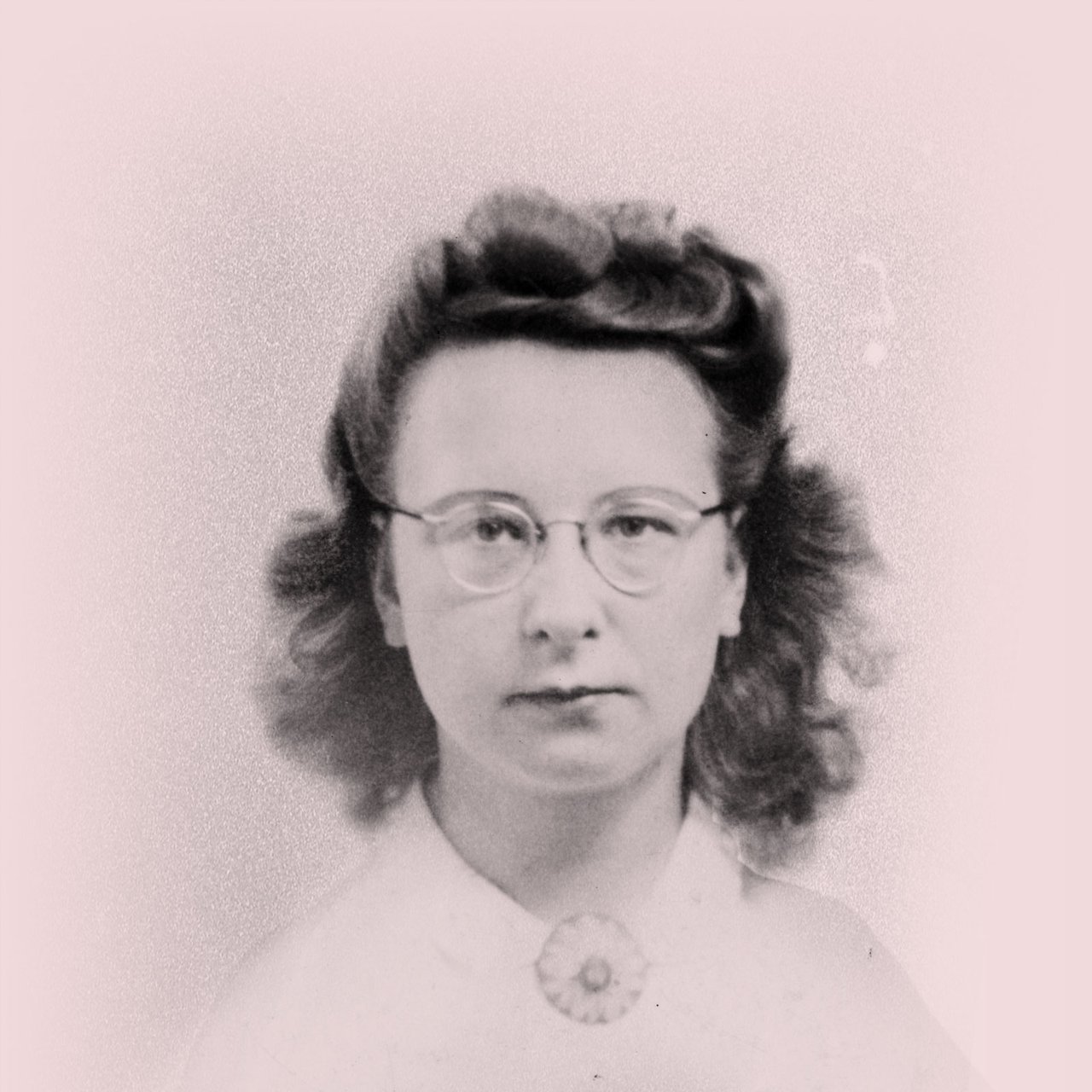In 1937, Bep started working for Otto Frank as an administrative employee. ‘Mr Frank liked her, and so did I. Right away Bep and I were a good team and became friendly,' her colleague Miep Gies recalled after the war.

Bep Voskuijl
Bep Voskuijl was the youngest of the helpers helping the people hiding in the Secret Annex. Anne considered her to be one of the ‘young people’ and they got along very well.
Bread, milk, and correspondence courses
Bep was not very aware of the preparations of the hiding place. If she noticed that furniture was carried upstairs, she never asked any questions. Bep was presumably the last of the office workers to be taken into the confidence of Otto and the others, because she was so young. Even so, she, too, agreed to take care of the people hiding in the Secret Annex.
On Sunday 5 July 1942, Bep celebrated her 23rd birthday. The next day, when she went to work, the Frank family had already moved into the Secret Annex. For the next two years, her life was governed almost completely by her care for the people in hiding.
Bep was mainly in charge of practical matters: she brought milk and bread, provided course materials, and registered for a correspondence course in Latin under her own name. In reality, the course material was meant for the people in hiding and it was Margot who did the homework for the Latin course.
Bep was lucky to have the support of her father, who worked as a warehouse manager in the company, and who was soon informed of the Secret Annex. It helped her to share the burden of the secret.
‘She was especially close to Bep, the young typist, and the two were often whispering in a corner.’
Bep and Anne
Bep got on well with Anne and the feeling was mutual. Anne considered her to be one of the 'young people' and was very curious about Bep's experiences: the films she was seeing, but also how things were going between Bep and her fiancé Bertus.
For dinner, Bep regularly joined the people in the Secret Annex, because at home there was not always enough to eat for ten people. In her diary Anne characterised her as follows: ‘Bep has a healthy appetite. Leaves nothing on her plate and is not picky-and choosy. She is easy to please and that is just what pleases us. Cheerful and good-tempered, willing and good-natured, these are her characterictics.’
At the end of October 1942, Anne convinced her to spend a night in the Secret Annex, but Bep did not sleep a wink. ‘To tell you the truth, I was terrified. Every time I heard a tree creaking in the October wind or a car driving along the canal, I grew afraid. I was grateful when morning came, and I was able to get back to work.’
‘If you just think (.) that Kleiman is ill, Miep staying at home with a cold, that she herself has a sprained ankle, love worries, and a grumbling father at home, then it's no wonder she's at her wits' end.’
Grave concerns
In addition to her care for the people in hiding, Bep also had to take care of her father. In the spring of 1943, he became seriously ill and was no longer able to work for the company. Once in a while, Bep would feel overwhelmed.
Anne’s bond with Bep is evident from her involvement with Bep’s engagement. Anne was critical and not afraid to speak her mind. ‘Bep doesn’t love him and that is reason enough for me to advise her against marriage. Bep’s whole aim is to work her way up and Bertus pulls her down’ Before long, Bep broke off the engagement.
The arrest
The bond between Bep and Anne was broken when Dutch police officers, headed by SS-Hauptscharführer Karl Josef Silberbauer, unexpectedly raided the company on 4 August 1944.
Johannes Kleiman, one of the other helpers, succeeded in sending Bep away. He wanted her to take his wallet to a friendly pharmacist, who would then inform Kleiman's wife that things had gone wrong on the Prinsengracht. Bep was able to leave the building unhindered, as no one stood guard outside. She delivered the wallet and started wandering the streets, not knowing what to do.
Only by the end of the afternoon, or possibly the next day, did Bep return to the Prinsengracht. By then, the eight people in hiding and two of the helpers had been arrested and taken away. Together with Miep and Jan Gies and Willem van Maaren, Bep went to take a look in the Secret Annex. Anne's diaries and notebooks were scattered across the floor. Together, they gathered the papers and Miep kept them in a drawer of her desk: the diary was saved.
Bep’s daughter, Anne
Bep and Miep kept the company running until Johannes Kleiman returned from captivity. In that same last year of the war, Bep also met Cor van Wijk. They married in May 1946, a year after the liberation. They had three sons and a daughter. Their daughter was named after Anne Frank.
After the war, Bep struggled with all the attention due to her role in Anne Frank's life, preferring to stay in the background. An interview she gave in 1960 brought on ‘a nervous breakdown and a severe headache. Even pleasant things, such as invitations here and there, are nerve-racking, both before and after.’
However, Bep did stay in touch with Otto Frank, Jan and Miep Gies, and Victor Kugler. On a few occasions, she went to visit Otto Frank in Basel (Switzerland) and Victor Kugler in Toronto (Canada). Bep died on 6 May 1983, when she was 63 years old.